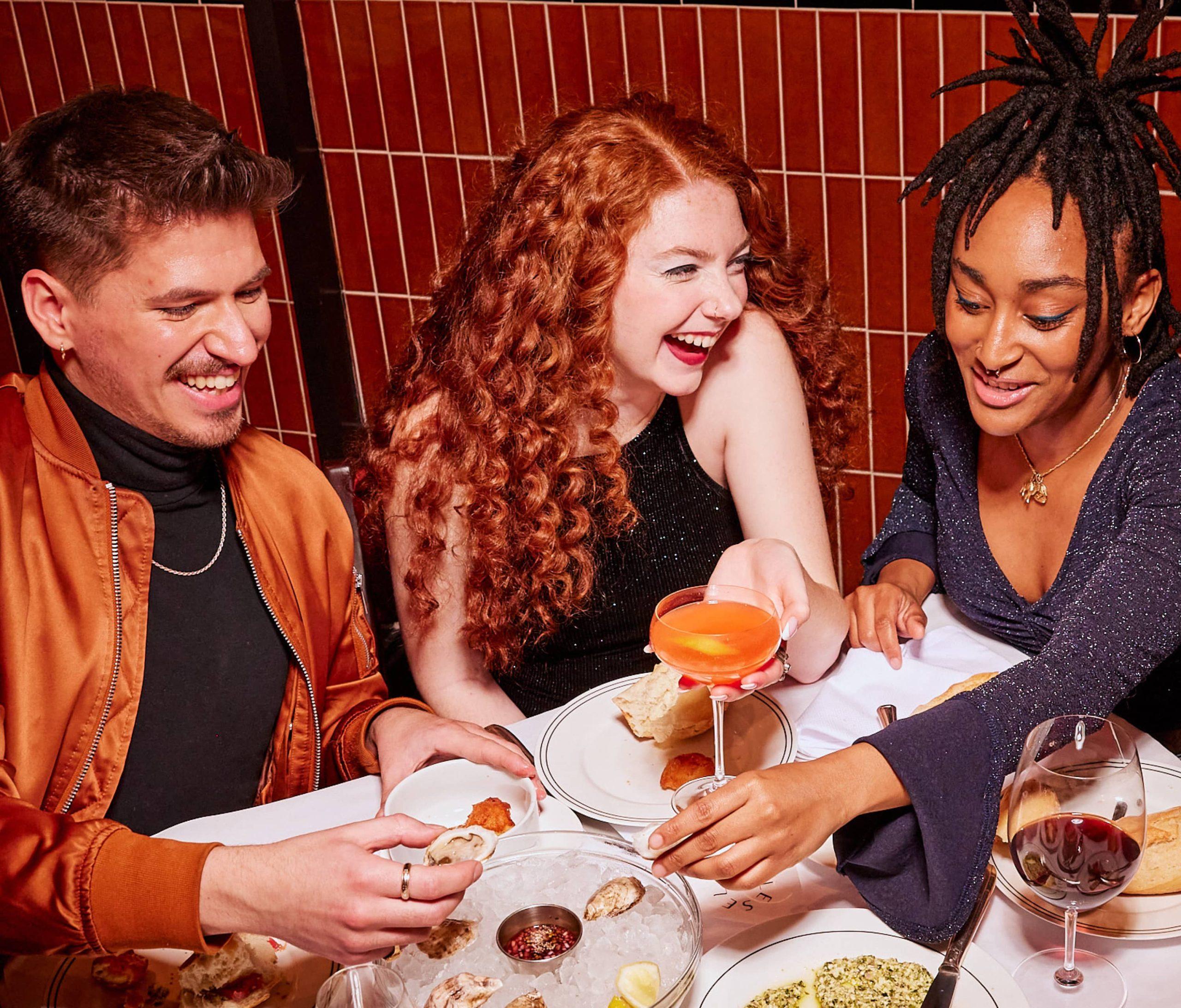Your restaurant’s website needs to look snazzy, no doubt. Plus, it should reveal important dining information, like the menu and what guests can expect, while generally acting as a first point of contact for many potential diners. But it also needs to be SEO friendly so people can find you when they’re performing a trusted Google search. That’s why SEO for restaurant websites is so important.
Good SEO helps your spot climb the ranking of front organic search results, which are now more competitive than ever. Sounds complicated? It needn’t be, and we’ve put this guide together on how to optimise your restaurant site as well as your OpenTable profile page so you stand a great chance of ranking on search engines.
Read on for pro restaurant SEO tips.
Quick Links
What is SEO?
Key benefits of SEO for restaurants
Tips for an SEO-Friendly restaurant website
The future of SEO
What is SEO
Short for search engine optimisation, SEO is an essential digital marketing strategy for any business. It’s the art of enhancing your website’s visibility to search engines like Google and other search engines like Bing. This involves using keyword research to optimise websites, building high-quality backlinks (a link from one website to another) and ensuring a seamless user experience. With effective SEO, your website can rank higher in search results, leading to increased organic traffic and potential customers. It’s a crucial component for business success online.
Key benefits of SEO for restaurants
Think of SEO as the signage guiding food lovers straight to your restaurant in the vast digital space that is the internet. Just as a prime location attracts more diners, SEO helps your restaurant show up in search engine results when people are looking for a place to eat. It’s like getting the best spot in town, but online. Effective SEO leads to increased visibility, more potential customers, and ultimately, more bookings. It’s the special recipe for your restaurant’s online success, if you will.

Tips for an SEO-Friendly restaurant website
1. Make your website mobile friendly
You want your website to be as easy to read and navigate on that small screen as it is on a desktop computer. Prioritising the mobile experience is a must for reaching diners. In 2023, more than 60% of all web traffic came through mobile phones. Google’s Mobile-Friendly Testing Tool is a good starting point to fix any mobile formatting issues and make sure your website is mobile friendly.
2. Keep navigation clear and simple
When guests visit your website, it should be easy for them to find what they’re looking for. Basic information about your restaurant, like your address and neighbourhood, is important for local SEO. You don’t want it to be hard to find for search engines or potential guests to find you.
Make sure your website design and optimisation is on point and so it has an easy-to-understand structure, one that helps search engines easily identify pages focused on frequently-used search terms like “Menu” and “Reservations.”
It can be tough to have perspective on your own site, so have a friend or employee click around and ask them to provide feedback on how easy or difficult your website is to use. It might also be worth trying a user-testing website, where people navigate your restaurant website and provide feedback on their experience.
3. Don’t rely on embedded text images
You might think having PDFs files and logos to display your restaurant’s website is a quickfire way to showcase the food you serve. While that may be true, it’s actually damaging for SEO. Each page of a website is scanned by search engines with the aim of understanding its purpose. When a search engine scans your site, you want it to know that you’re a restaurant, what type of food you serve, where you’re located and anything else relevant.
When crawlers (the things that search websites) get to work they can’t scan files like PDFs because there are no meta tags, which are important for optimising your content. It means there’s no SEO value, and a search engine can’t define your website. That means any SEO opportunities are lost.
Really, you should try to avoid using PDFs and create a text-based menu landing page. Or include alt-text if the page uses images and PDF as this helps crawlers scan and understand the content.
4. Share photos on your website
Besides acting as a source of inspiration for people to visit your restaurant, large, high-quality images can also help with SEO. But be careful to avoid uploading image files that are so large they slow down the page loading. (If you have any doubts, you can always check and then resize if needed.) Slow loading pages and photos are significant factors for why users click away from a site, so it’s best to avoid them from a user experience and SEO perspective.
Also, when naming your image files, use keywords relating to your restaurant (i.e., “chez-panisse.jpg”) for best SEO results and include descriptive alt tags (“chez panisse restaurant berkeley”). It’s also important to add captions on images where applicable. Not only does this help the site’s accessibility, but it provides more space for keyword integration and increases your chance of appearing in organic search.

5. Create multiple pages on your website
If you’re smart about how you structure your site, it’s possible to get several top results in Google. Consider creating distinct pages of your website focused on topics that people are looking for through organic search.
People have a better chance of seeing your site and the various pages such as Menu, Reservations, About, Contact, Directions and Gallery pages if you have a clear website structure. Make sure details about your restaurant remain consistent both on your own website and elsewhere.
Keep a record of this so when you update your hours you can keep this info accurate and consistent everywhere it appears on the web.
6. Maximise your reservations page
Today, diners want one thing when it comes to restaurant reservations: the ability to book a table online – and luckily, OpenTable makes it easy to do directly on your website. Here are some tips to create a high-performing online reservation page:
A user-friendly reservations page
- Clearly display how to reserve a seat at your restaurant. If you are on OpenTable, you can also consider linking directly to your OpenTable profile or including the OpenTable reservation widget on this page. The widget allows users to make a reservation without leaving your site. You can get the exact link or widget embed code from your OpenTable account.
- Give people detailed information such as how far in advance reservations can be made and requirements for party sizes. Doing so helps restaurant search engines determine the purpose of the page and whether it should be considered for showing in organic search results.
Technical SEO optimisations for restaurant websites
- Include the word “Reservations” on the page, or related keywords like “Bookings”, particularly in headings, and ideally in the “h1” tag. The “h1” tag helps crawlers understand the topics of a page and holds high importance.
- The “title” html tag is what shows in Google search results, and a well-crafted tag will stand out from the competition and generate more clicks. Set the “title” html tag to what you would like to appear in organic search. A good title should include the name of your restaurant and the word “Reservations.”
- Meta descriptions are essentially a summary for a webpage. Set the “meta description” html tag to a short sentence, about 160 characters, describing the contents of the page. If users can make online reservations, make that clear in the description so they know it’s possible before they click on the search result.
- When linking internally between pages on your website, use relevant text in the hyperlink – for instance “reservations” or “book a table” for a link to a reservations page.
Add the OpenTable widget booking to your homepage and reservations page
It’s all about bookings, and the end goal of SEO for restaurant websites is to increase the number of people making a reservation. Once you’ve got the traffic through to your restaurant, OpenTable can help simplify the bookings process.
Place your widget toward the top of the home page where people can see it immediately to drive conversion. Otherwise, people may get confused while navigating the site and drop off before they find it.
In addition to the home page, it helps to build another dedicated Reservations page that displays the OpenTable widget as well. Having a Reservations link in the top navigation of a restaurant’s website can increase conversion, because it generates organic sitelinks. Sitelinks are the additional links that may appear below your primary SEO result when diners search for your restaurant’s name.
How is AI shaping the future of SEO?
While the fundamentals of SEO remain in place, it’s always evolving. AI is set to revolutionise the future of SEO, ushering in a new era of more accurate, personalised and efficient search engine optimisation.
With advancements in AI technology, restaurants will be able to anticipate enhancements in user experience, predictive SEO, voice and visual search optimisation. In order to stay competitive in this rapidly evolving digital landscape, you’ll need to embrace these changes and adapt SEO strategies when it comes to restaurant marketing.
Harnessing the power of AI will aid you in delivering a seamless, engaging experience for users. As we progress, the integration of AI in SEO is set to become increasingly pivotal, shaping the future of online search and visibility.
SEO on your restaurant website
You don’t have to implement all these SEO strategies at once to start seeing the benefits. Begin with something that’s approachable for you, and continue to make improvements as you go. Even if you’re starting from scratch, there are loads of helpful guides to help you succeed. SEO best practices evolve and change over time, but remember that search engines want the same thing you want—to provide accurate and helpful information to the diners who are looking for you online. The better your website serves that potential guest, the better your SEO will be.




